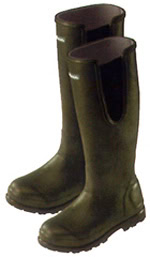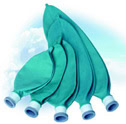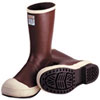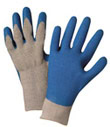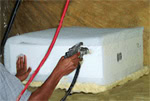Synthetic Latex
Chemionics Corporation custom formulates & compounds many different synthetic, water-based, polymers for a wide variety of applications. These polymers are man-made as opposed to being a natural product, and were typically developed to meet unique properties not met with a natural product.
Some of the primary synthetic polymer types that Chemionics formulates with are:
- Polychloroprene (Neoprene)
- Nitrile Latex
- Acrylic Latex
- Polyvinyl Acetate (PVA)
- Vinyl Acrylics
- SBR Latex
Polychloroprene (Neoprene)
Polychloroprene is an extremely versatile synthetic rubber with more than 75 years of proven performance in a broad spectrum of applications. It was originally developed as an oil-resistant substitute for natural rubber, and was the first commercially available synthetic polymer.
Neoprene is noted for a unique combination of properties, such as:
- Sun / ozone / weather resistance
- Oil / fuel / alkaline / acid / & chemical resistant
- Wide range of operating temperatures
- Outstanding physical toughness
- Inherently burn resistant
Some of the primary processing applications for Polychloroprene compounds are:
Cohesives (Cold Seal / Self-Seal Adhesives)

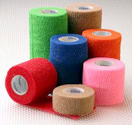

Our synthetic (Latex-Free) cohesives are based upon synthetic latex (neoprene) as opposed to natural latex. Surfaces coated with cohesives will only adhere to other substrates coated with the same cohesive.
These types are used primarily for medical packaging where latex sensitivity is a concern. These synthetic cohesives perform well on a wide variety of paper & film substrates.
GenGrip Foam Adhesive (Latex-Free)
This product line is a one-part, water-based, synthetic latex adhesive specifically developed for adhesion for foam to foam applications.
This product line is based upon synthetic latex (neoprene) as opposed to natural latex.
This adhesive is predominately used for medical applications where latex sensitivity is a concern. Applications include hospital furniture and mattresses.
Resorcinol-Formaldehyde Latex Adhesive (RFL’s)
RFL adhesives are used to treat textiles (nylon, polyester, etc.) to promote rubber to textile bonding.
Chemionics can custom formulate an RFL to suit your exact requirements.
RFL’s are strong, heat resistant, highly flexible adhesives suited for bonding a variety of rubber types to a variety of fabrics & textiles.
Large volumes of RFL’s are used in treating textiles for the production of tire cord, v-belts, diaphragms, conveyor belting, and hoses.
RFL’s demonstrate outstanding adhesion, exceptional heat resistance, and the capability to bond to a wide range of textiles & rubber polymers.
Chemionics can formulate RFL’s utilizing either neoprene or nitrile latex as the base polymer.
Nitrile Latex (Butadiene Acrylonitrile)
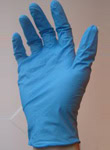

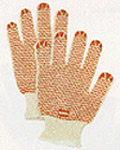
Nitrile latex is a synthetic latex polymer that was developed to be more chemical & abrasion resistant that that of natural rubber.
Nitrile latex offers the following properties:
- Resistance to oils / fuel / acids / fats / greases / solvents / & other chemicals
- Resistance to punctures
- Excellent abrasion resistance
- Not prone to induce allergic reactions
- Wide range of operating temperatures
Some of the product applications for nitrile latex include:
- Unsupported medical gloves
- Coated work gloves
- Nitrile glove dots
- Fabric coatings
Chemionics can custom formulate nitrile latex polymers to suit your exact application & product requirements.
